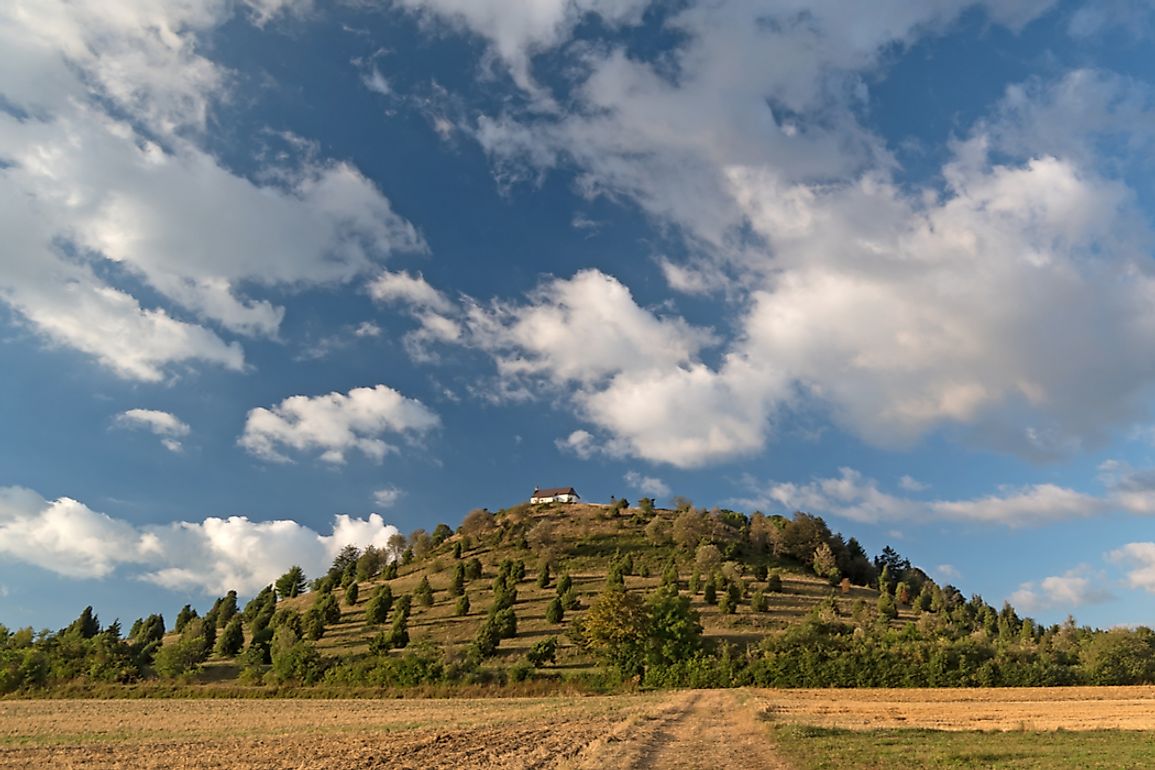What Is A Knoll In Geography?

A knoll is a British name that refers to a small natural hill. A knoll is tiny in size compared to an ordinary hill and is characterized by a round top. In some regions, it is also referred to as a hillock. Such mounds are found either individually or in clusters. Knoll formation is common in Great Britain and China although the feature can be found in other parts of the world such as America and Africa.
Formation Process
A knoll can be formed through various processes as outlined below.
Weathering and Erosion Process
A knoll can be formed by either the process of weathering or erosion or a combination of both. Variation in hardness of different parts and types of rocks leads to the formation of a knoll. The less hard parts of the rock erode away leaving the harder part protruding. The part that is more resistant to weathering and erosion is left topographically higher than the surrounding. As the weathering process continues wearing out the protruding part, a rounded top forms. Resistant rocks include basalt, conglomerate, limestone, sills, lava flows, quartzite, and sandstone. An example of a weaker type of rock is shale which is easily eroded by agents of weathering.
Melting of Glaciers
Knolls in cold areas are formed when glaciers polish down hard granite or gneiss rocks. A geographic phenomena forms which are characterized by a rounded top with sparse vegetation. In other regions, knolls forms when glaciers melt and shift down a sloping ground. The force leads to digging up of the loose debris, leaving a hard surface which forms into small rounded mounds. With time, the mounds are shaped by weathering agents to form knolls.
Water Currents
The current of water can lead to the formation of glaciers. As the water waves sweep a surface, it carries away loose earth and begins to corrode the softer rocks. With time, only the hard rocks withstand the force. The rocks are then worn out due to repeated waves. After the water dries up, knolls are left protruding. Such hillocks can also be found on the surface of the sea.
Erosions and Deposition
Erosions and deposits can also lead to the formation of a knoll. When materials are carried by weathering agents and deposited, they might dry up to create a knoll. Wind, rain, and sunshine are the common agents that can create such landforms.
Notable Knolls in the World
Although a knoll is a small geographical feature compared to a hill, mountain or a butte, it is still notable depending on an occurrence. For example, John F. Kennedy, the 35th president of the United States was assassinated near a knoll. The knoll, now known as the grassy knoll, is located on the north side of Elm Street. In some countries road sign “a blind knoll’’ is put on roads to warn motorists of a knoll ahead which might not be visible to a speeding driver.
Economic Importance of a Knoll
A knoll can be a perfect spot to hold a picnic, especially if the area has grass. Small structures and towers can be built on the larger knolls. An advertising billboard or road sign mounted on the top of a knoll can be more visible.
.











